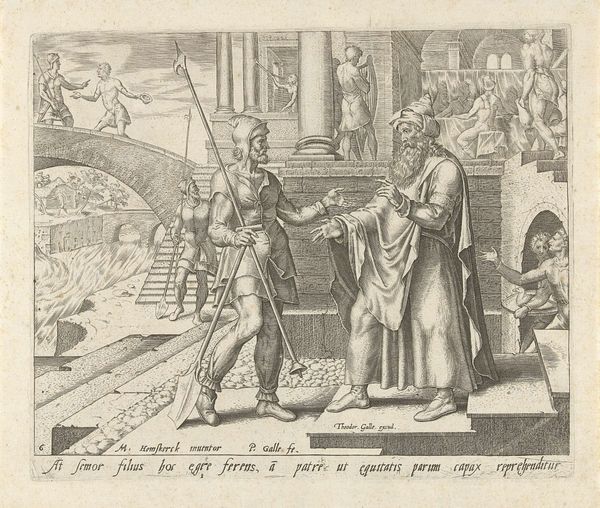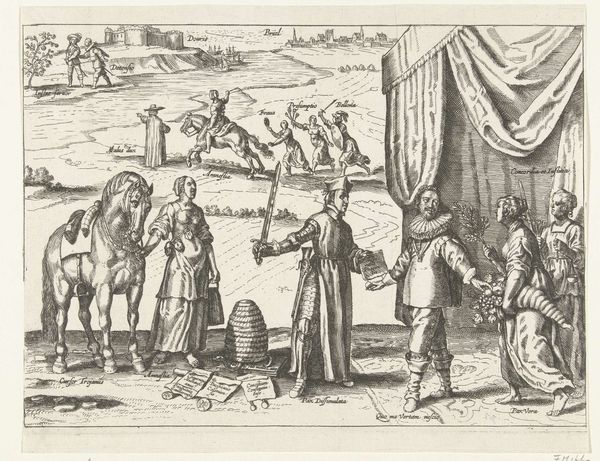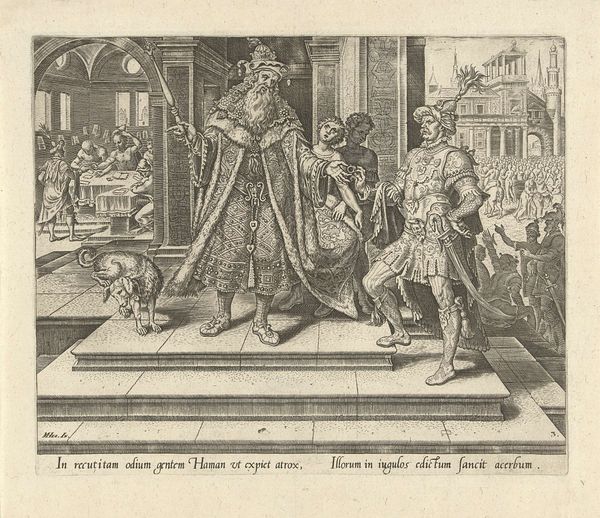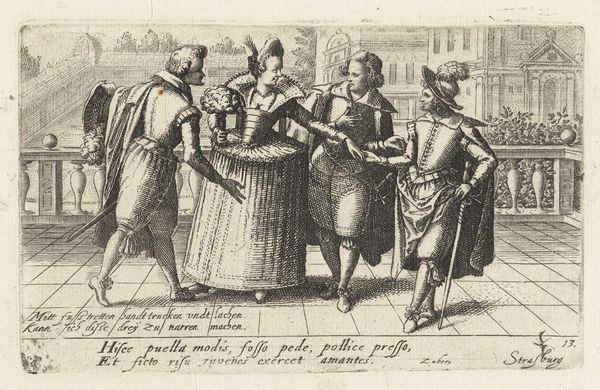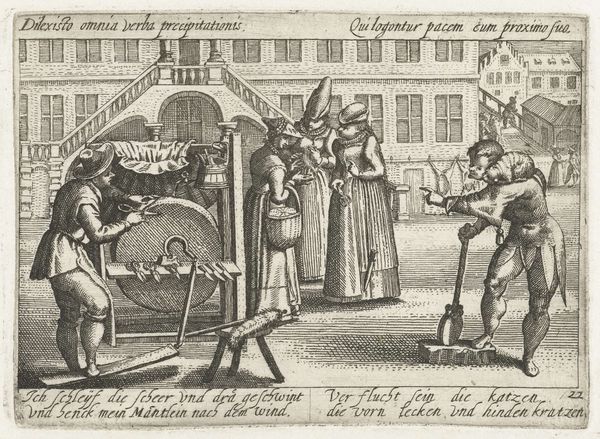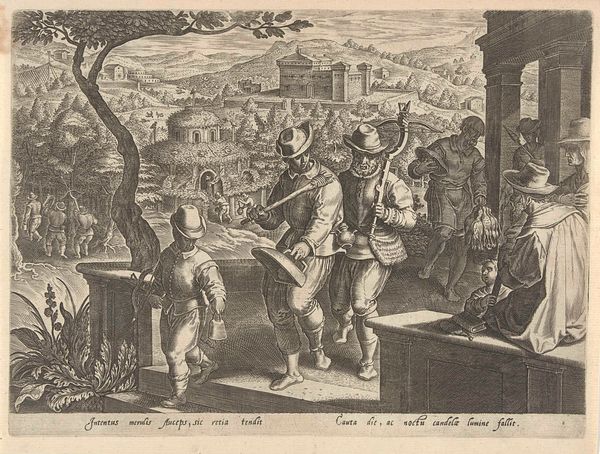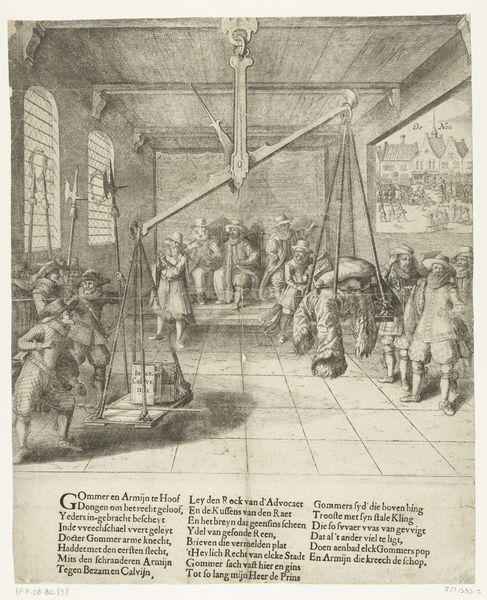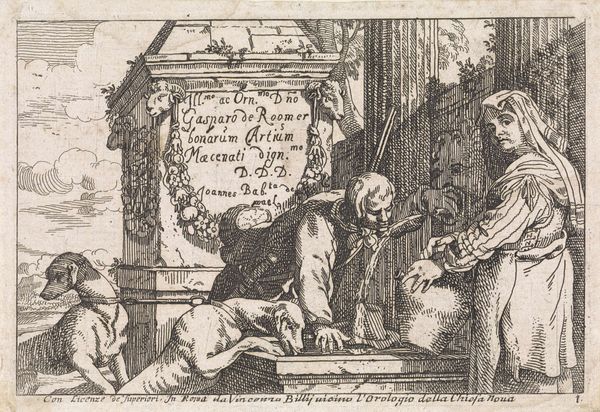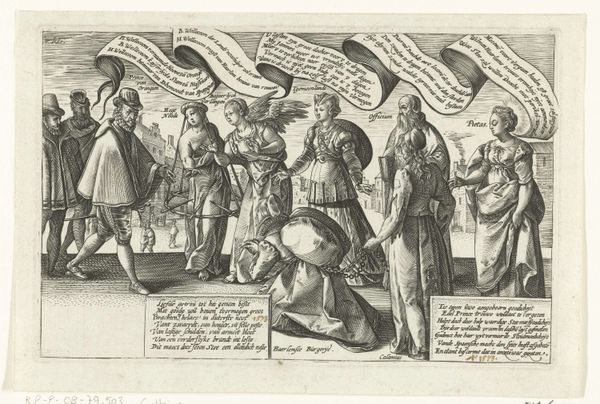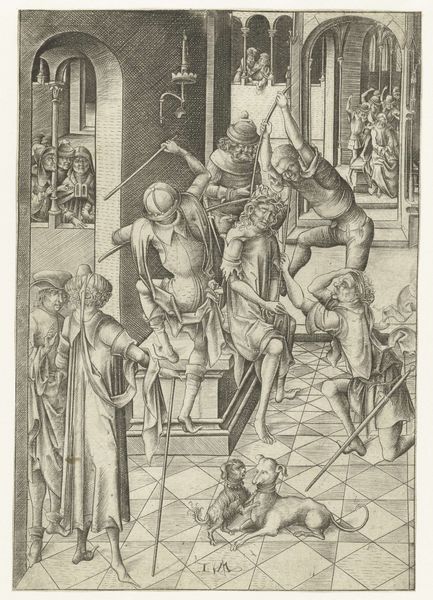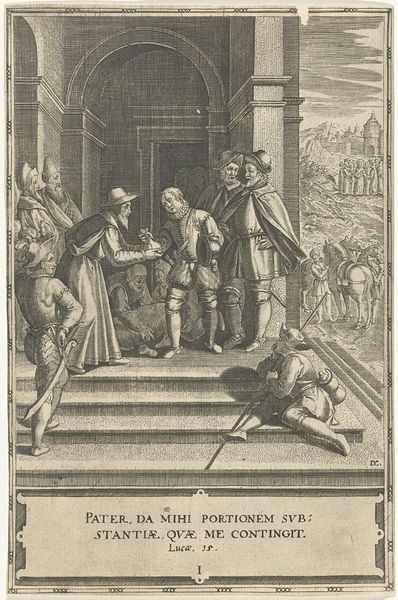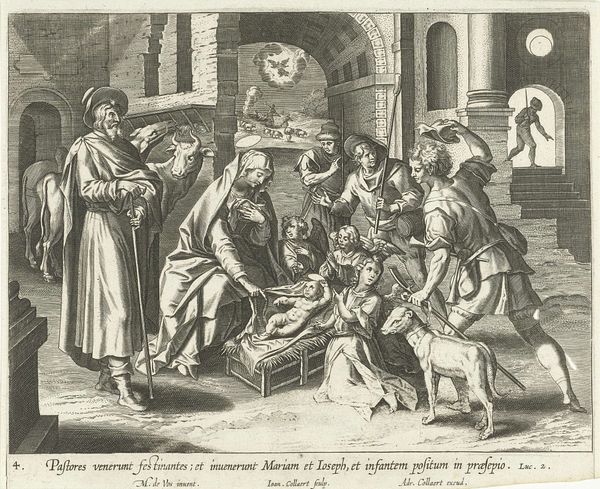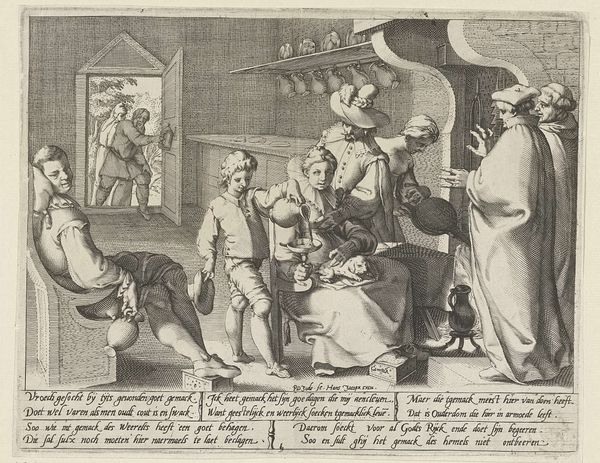
drawing, print, etching, paper, ink, engraving
#
portrait
#
drawing
#
narrative-art
# print
#
etching
#
dog
#
old engraving style
#
mannerism
#
figuration
#
paper
#
ink
#
genre-painting
#
engraving
#
realism
Dimensions: height 94 mm, width 134 mm
Copyright: Rijks Museum: Open Domain
This etching, made by Jacob van der Heyden around the turn of the 17th century, uses a very particular technique to achieve its effect. The artist would have covered a copper plate in a waxy, acid-resistant ground, then used a sharp needle to scratch away the coating, exposing the metal underneath. The plate was then submerged in acid, which bit into the lines, creating grooves that would hold ink. Finally, the plate would be wiped clean, the ink remaining only in the etched lines, and pressed onto paper. Heyden was one of many artists who embraced etching as a method of mass production, allowing images and ideas to circulate widely. In this scene of a student literally falling through a basket, the sharp, precise lines enabled the artist to depict textures and details, and to vividly convey the indignity of the figure’s predicament. The printmaking process, which allows for the widespread distribution of images, connects directly to the rise of both the marketplace and capitalism, as well as a critical view of this transformation.
Comments
No comments
Be the first to comment and join the conversation on the ultimate creative platform.
